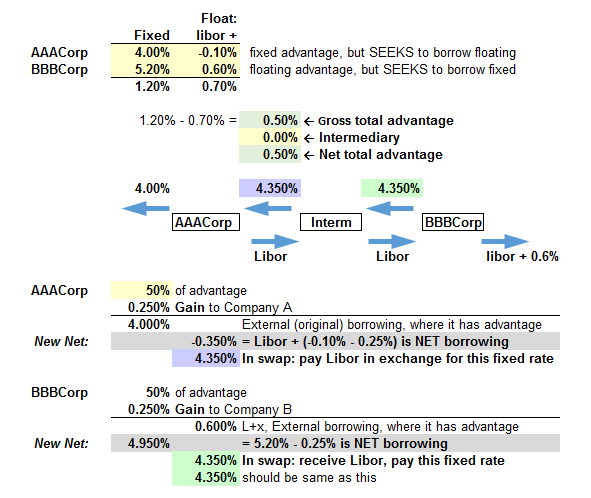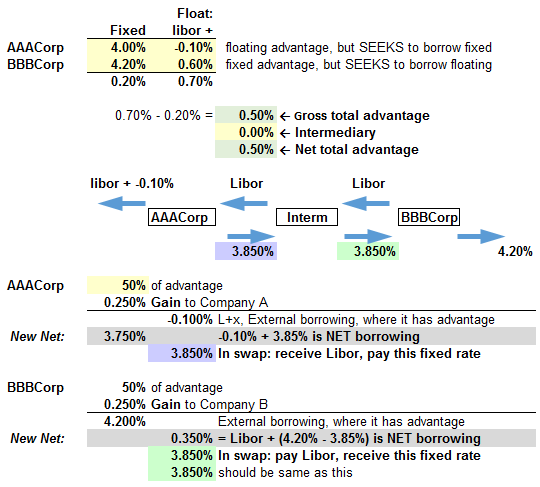afterworkguinness
Active Member
Hi,
Can you quickly clarify for me how to determine a comparative advantage ? I simply don't get it.
As per Hull 7.4:
Company | Fixed | Floating
AAACorp | 4.0% | LIBOR -0.1%
BBBCorp | 5.2% | LIBOR + 0.6%
I only see the absolute advantage.
Can you quickly clarify for me how to determine a comparative advantage ? I simply don't get it.
As per Hull 7.4:
Company | Fixed | Floating
AAACorp | 4.0% | LIBOR -0.1%
BBBCorp | 5.2% | LIBOR + 0.6%
I only see the absolute advantage.



